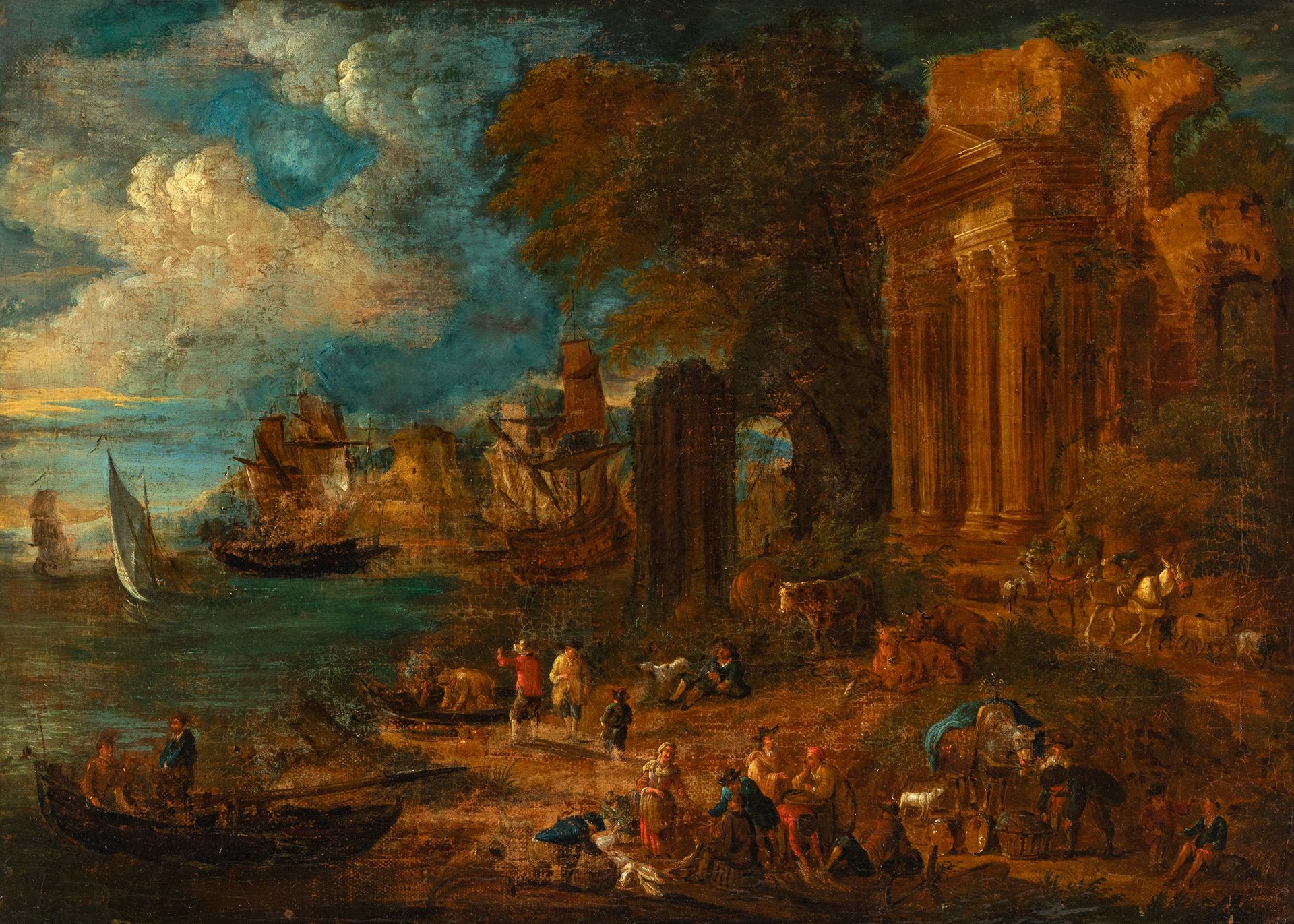Description
Dutch school of the 18th century. "Landscape with ruins and figures". Oil on canvas. Re-coloured. It presents repainting. Measurements: 41 x 58,5 cm; 56 x 73 cm (frame). Of all the contributions made by the northern European countries to the history of art, none has reached the lasting importance and popularity of the Dutch landscape painting of the 17th century. The works of Avercamp, Van Goyen and Ruysdael, among many others, evoke the outlines, terrains and atmospheres of the Netherlands more vividly than any other place, large or small, has ever been depicted. Within this tradition, the most revolutionary and enduring Dutch landscape contribution has surely been its naturalism. Seventeenth-century Dutch painters were the first to create a perceptually real and seemingly comprehensive image of their land and people. Although landscape as an independent genre appeared in Flanders in the 16th century, there is no doubt that this type of painting only reached its full development among Dutch artists. It can be said that it was practically they who invented the naturalistic landscape, which they affirmed as an exclusively central feature of their artistic heritage. There is no doubt that the Dutch painter, filled with pride in his land, knew how to show through his paintings the beauty of its vast plains and overcast skies, the regular layout of its canals and meandering rivers, its polders and dykes, its beaches and, of course, its spectacular stormy seas. Despite their naturalism or the inventorial record of fact, Dutch landscapes were at least as much a product of imagination as of observation. The Dutch vision of reality, almost as literal as photography, does not so much trace the os or examine the topography of its surroundings as it naturally selects and reshapes nature to present it in an exemplary way.
94
Dutch school of the 18th century. "Landscape with ruins and figures". Oil on canvas. Re-coloured. It presents repainting. Measurements: 41 x 58,5 cm; 56 x 73 cm (frame). Of all the contributions made by the northern European countries to the history of art, none has reached the lasting importance and popularity of the Dutch landscape painting of the 17th century. The works of Avercamp, Van Goyen and Ruysdael, among many others, evoke the outlines, terrains and atmospheres of the Netherlands more vividly than any other place, large or small, has ever been depicted. Within this tradition, the most revolutionary and enduring Dutch landscape contribution has surely been its naturalism. Seventeenth-century Dutch painters were the first to create a perceptually real and seemingly comprehensive image of their land and people. Although landscape as an independent genre appeared in Flanders in the 16th century, there is no doubt that this type of painting only reached its full development among Dutch artists. It can be said that it was practically they who invented the naturalistic landscape, which they affirmed as an exclusively central feature of their artistic heritage. There is no doubt that the Dutch painter, filled with pride in his land, knew how to show through his paintings the beauty of its vast plains and overcast skies, the regular layout of its canals and meandering rivers, its polders and dykes, its beaches and, of course, its spectacular stormy seas. Despite their naturalism or the inventorial record of fact, Dutch landscapes were at least as much a product of imagination as of observation. The Dutch vision of reality, almost as literal as photography, does not so much trace the os or examine the topography of its surroundings as it naturally selects and reshapes nature to present it in an exemplary way.
